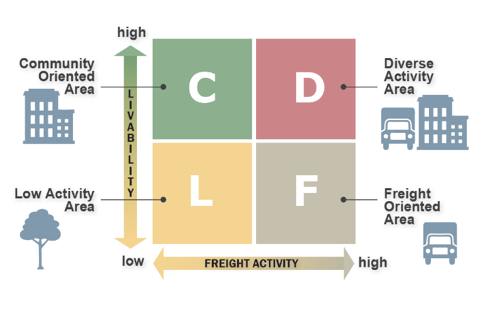freight roadway design guidelines
Florida Department of Transportation (FDOT), District Seven
Many roadway design elements can be implemented to work well for trucks, or well for pedestrians, but not often for both. The FDOT District 7 recognized the need for additional guidance in balancing the needs of safe and efficient truck movement and community livability concerns in communities where significant goods movement activity is needed in walkable, smart growth environments.
Renaissance supported this goal by developing a guidance document to supplement the FDOT manuals and provide both procedural and contextual advice for planners and engineers defining corridor and project level transportation solutions. The guidance builds on the concepts included in the Tampa Bay Regional Strategic Freight Plan.
We conducted a review of existing literature on the tradeoffs between freight roadway design elements and livable community environments as well as an audit of the FDOT PD&E Manual and Plans Preparation Manual to confirm the gaps in the current state of the practice nationwide. Collaboration with an internal review group confirmed the need for a document that defined design intent and strategy, with less emphasis on developing another set of roadway dimensional lookup tables. A key facet of the guidelines is the definition of land use and network context that is instrumental in understanding both the relevance of quantifiable measures such as truck volumes and development densities as well as qualitative elements such as designated freight routes or community values. The importance of considering both existing and desired future context in developing appropriate transportation solutions is stressed.


